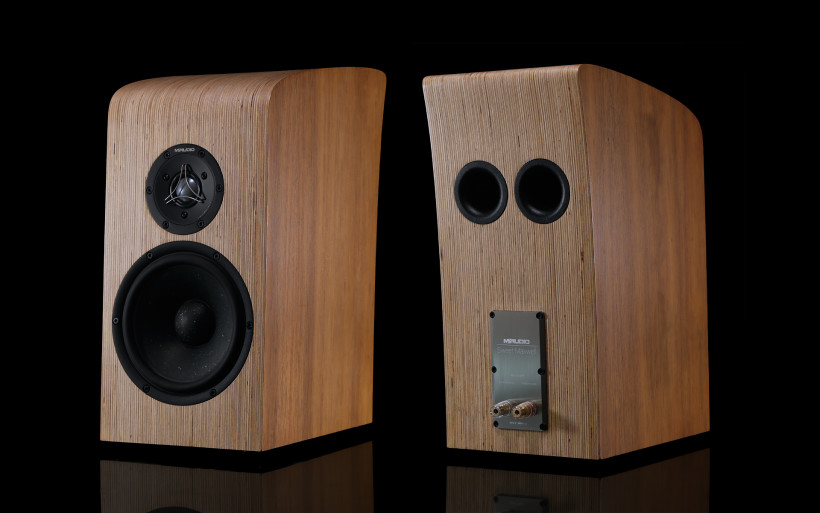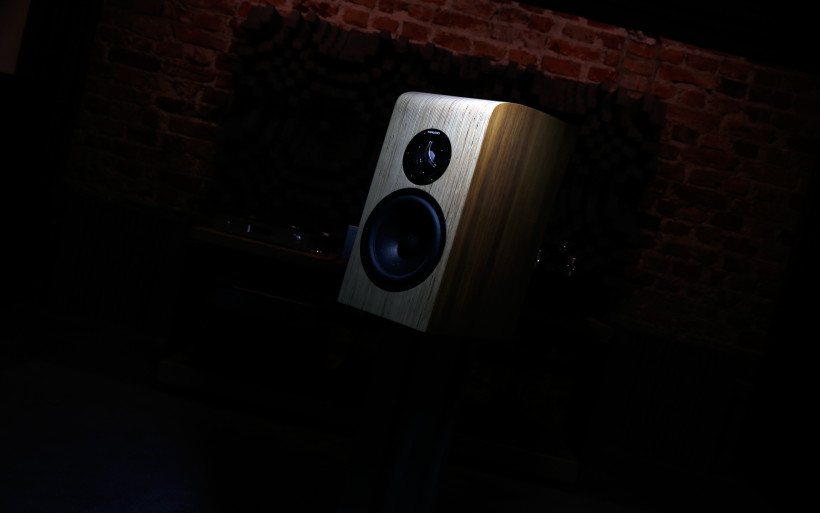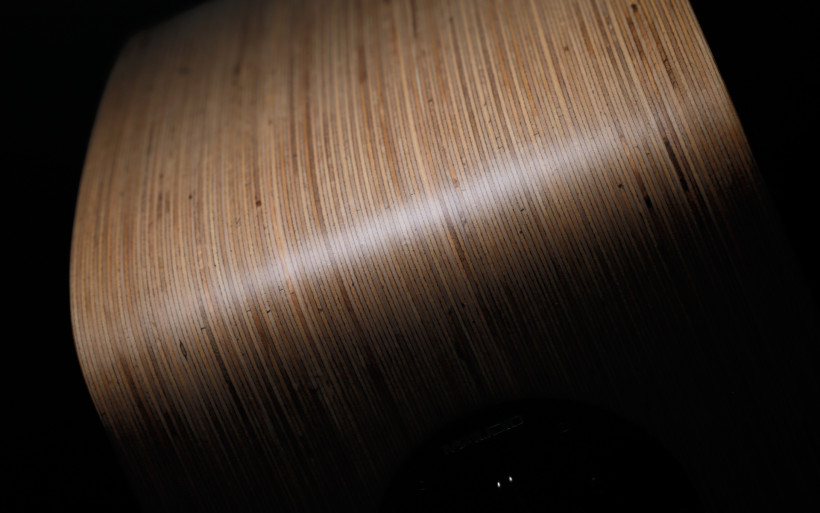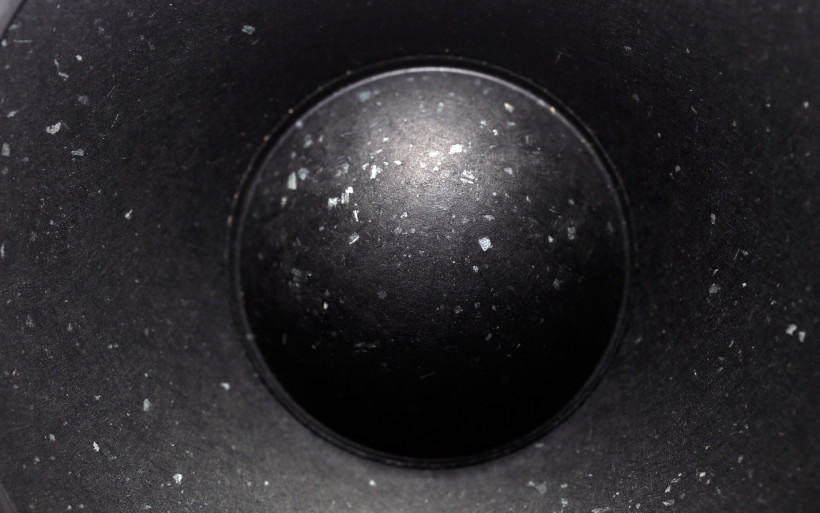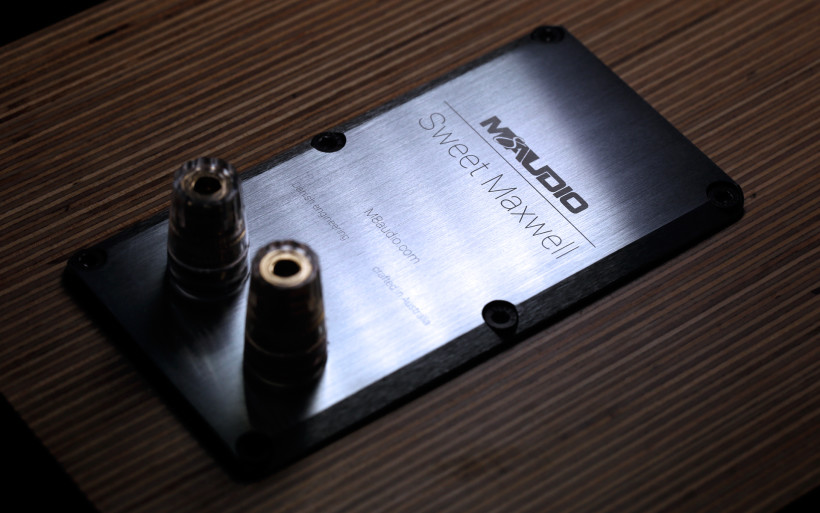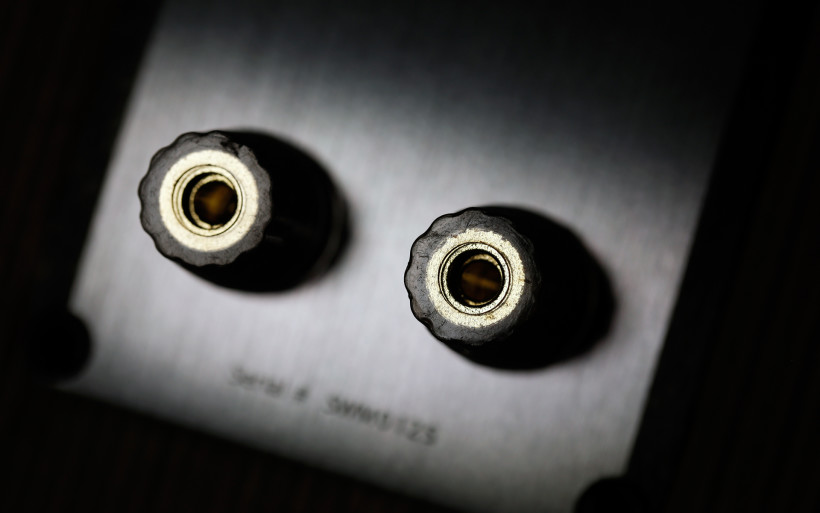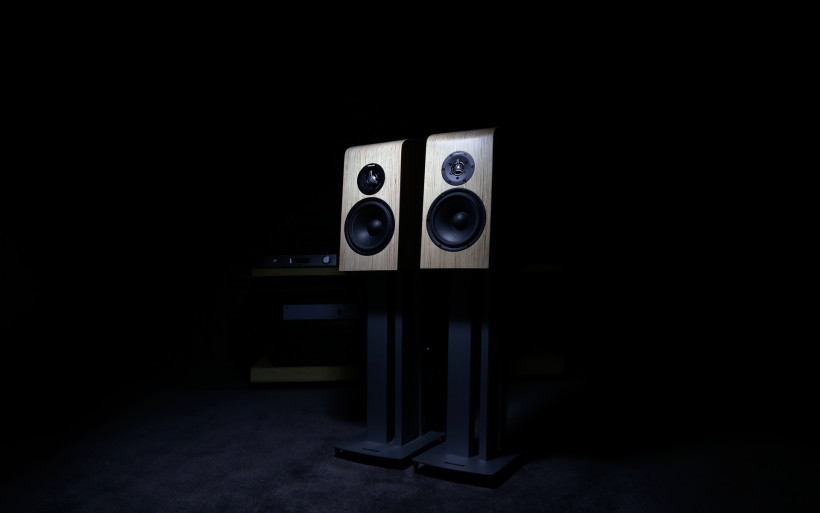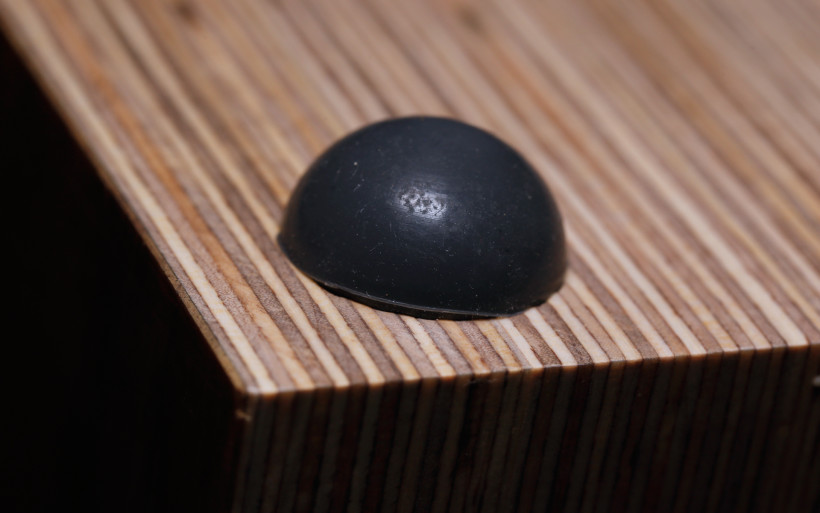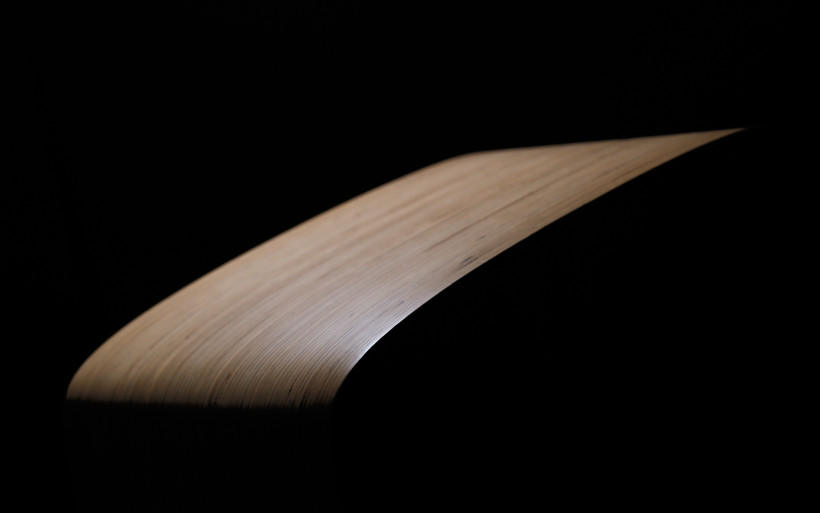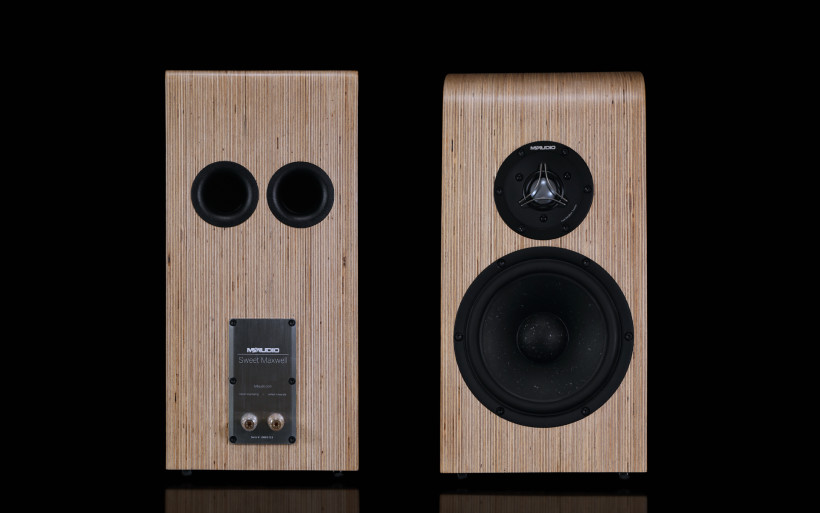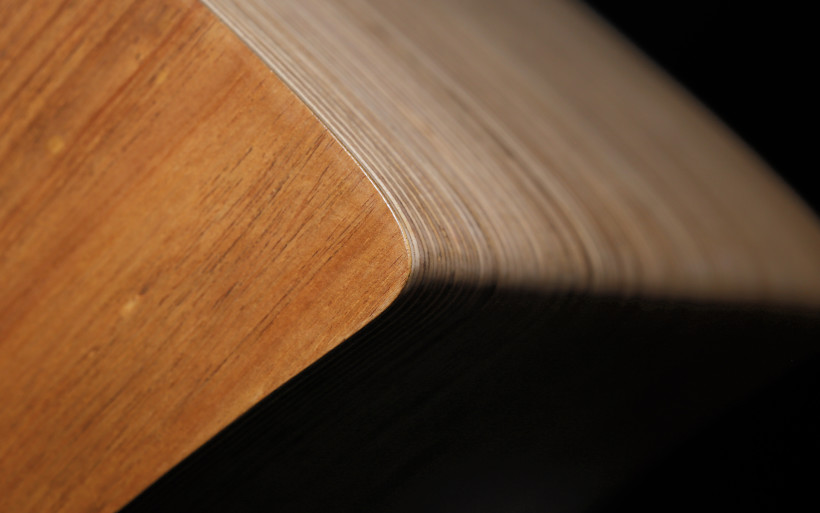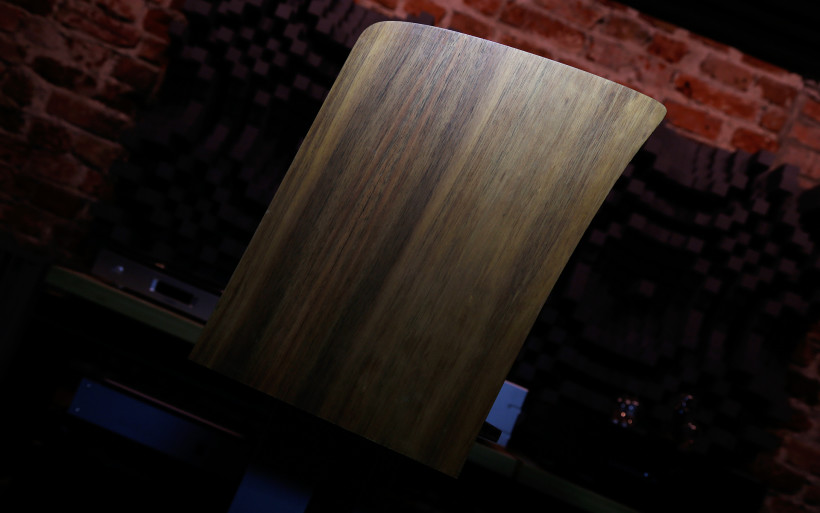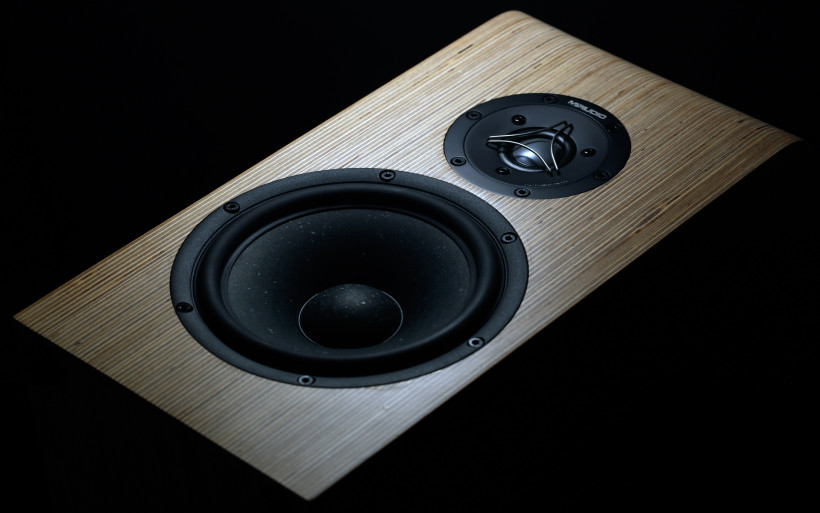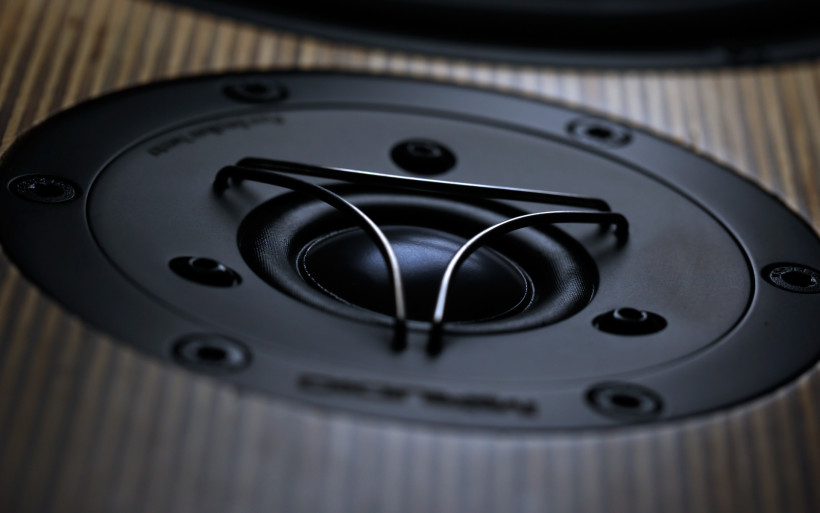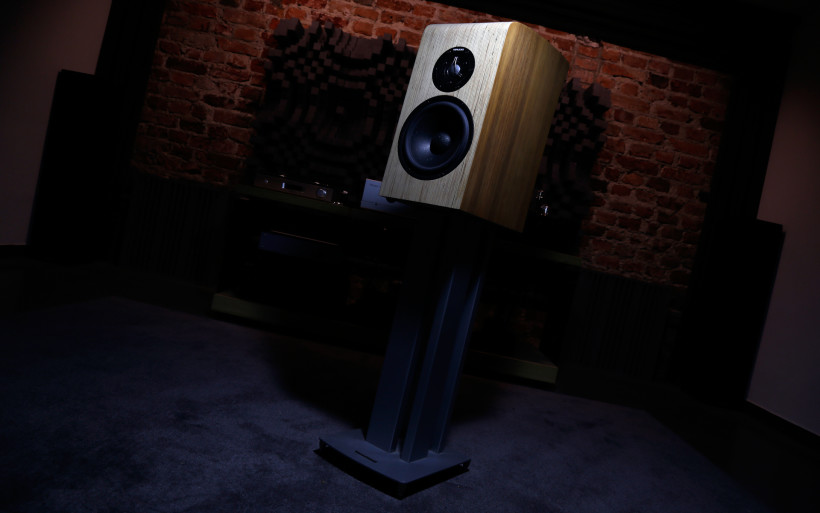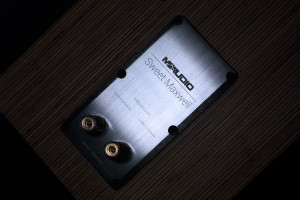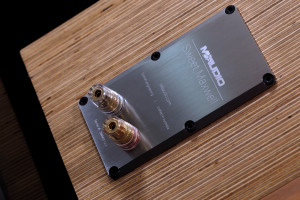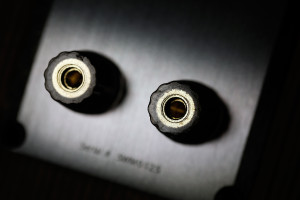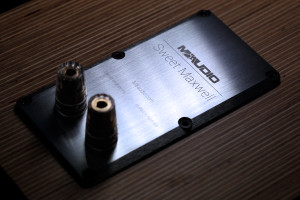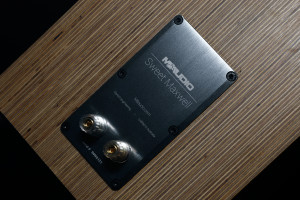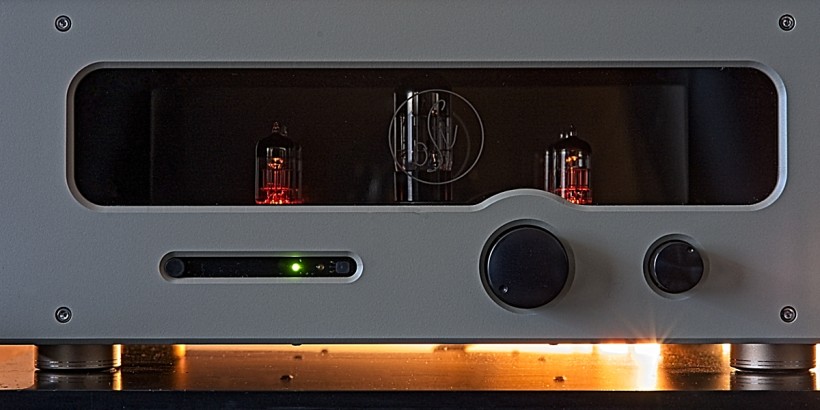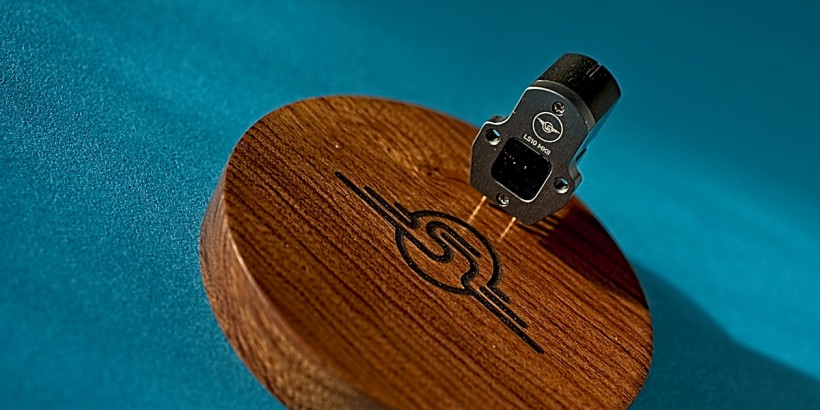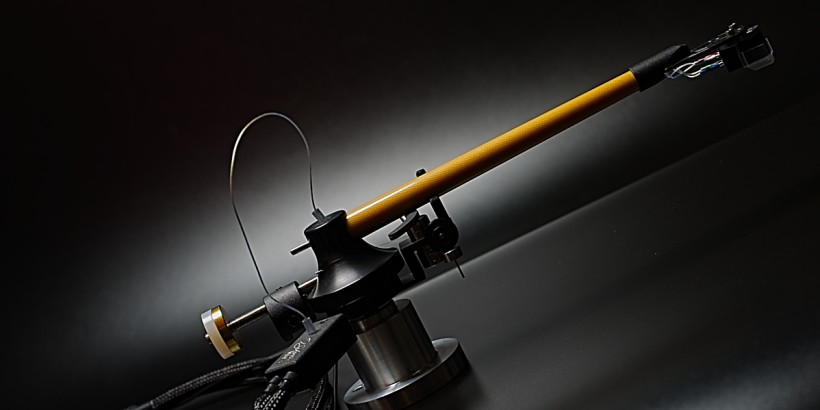The speakers branch of the audio industry matured over the years, hence to manufacture something innovative or interesting is a challenge. Not impossible though and here M8audio Sweet Maxwell monitors prove the point brilliantly. Enjoy!
Introduction
The M8audio manufacture was established in 2015 in Australia by its only owner/designer – Mark Thomsen. Eight years ago this 40+ Danish-born gent moved to Oz as that’s his wife’s homeland. When asked how his audio house came to be, Mark explained that electronic audio engineering was his daily job for many years. He was responsible for development testing, production, QC, project management etc. in automotive and mobile phone branches and Nokia was one of his employers back then. He used to make his own pre and power amplifiers and knows many different types of speakers and OBs, transmission lines, horns/high efficiency affairs and large ribbons are some of them. When Mark lived in Europe, he used to travel and ski a lot and was into cars. When M8audio launched, his focus shifted and some hobbies were abandoned to turn it into full-time activity. It requires dedication and that’s something our man seems to be perfectly aware of.
Mark is the sole full-time employee in M8audio and does almost all the heavy lifting. Occasional workers are involved to outsource some processes (i.e. finishes and web development), but most tasks happen within his workshop’s walls. A CNC machine at work in case of new manufactures is a rare sight to be seen and Mark has one. Usually this costly step of the whole manufacturing scheme is handled by a subcontractor. Its owner apparently wants to have this aspect under strict control, and has the necessary know-how to work on his own. A pair of Sweet Maxwell speakers is usually assembled within six weeks.
Mark explained that my loaner’s name is connected to his engineering background and James Clerk Maxwell (1831-1879). Our man finds this Scottish physicist’s and mathematician’s work astonishing, especially after taking into consideration limited knowledge available in the mid 19th century and very simple laboratory equipment used back then. Mark decided to acknowledge his work by naming a speaker range in his honour. As it says on the M8audio homepage, although published more than 150 years ago, this scientist’s electromagnetism related discoveries are considered as flawless and are the cornerstone of any loudspeaker. Besides, our man’s mother was also Scottish, hence there’s a little bit of heritage there as well. And the M8audio name itself? M is the obvious initial whereas 8 is considered as a lucky number in many cultures. And the M8 part sounds very much like the catchy ‘mate’ word.
The first M8audio product was introduced as early as in 2018, hence not years but months ago. For now there are several models available. Sweet Maxwell with a €4’200/pr on its sticker sits on top. A fair bit below is another bookshelf – Rocket 5.1 SuperResolution (€1’900) – and Sub One Ten (€1’600) subwoofer closes the list. The current M8audio line-up is quite limited, though there already is a teaser of things yet to come. One smaller monitor model and two proper floorstanders are in the Maxwell series pipeline. Also people into high quality surround setups are on Mark’s radar and different series should also expand in time.
The official M8audio website is up and running and looks professional. Mark is exceptionally communicative, not hesitant with answers at all and gave the impression of someone with things under control. And lastly, when asked about a business model of choice, Mark said that for the time being is factory direct. This might change once a significant benefit is within reach, but that’s tomorrow’s talk. Steady production and the M8audio word propagated here and there are the case today.
Build
Sweet Maxwell arrived in two separate and rather large cardboard boxes with foam fillers inside tailored to match each speaker very nicely. The goods were as secure as they could be. Very dense, stiff and in general of rarely seen quality, these liners contributed to the overall safety as well. Each speaker clad in its own cloth bag with a nice printing on it and a manufacturer’s card included showed attention to details. To most people these small things are of no importance, yet yours truly sees ’em as a proof that someone clearly wants to cover every field.
Sweet Maxwell stripped from its cover looks odd in a positive sense of this word, without any hints of quirkiness or exaggeration. One quick glimpse at this product will do, it stands from the crowd in a subjectively very appealing and quite easygoing way. This is a two-way design vented via two rear-firing bass-reflex ports. The product measures (HxWxD) 450x216x344mm and weighs 12 kilograms. Big and heavy, it’s one of the beefiest monitors I’ve had a pleasure of guesting at my place.
Because of its shape, Sweet Maxwell is a bit chunky, yet subjectively adorable. Its top edges rounded are what makes it quite appealing. Mark could’ve easily get away with 90 degrees angles all across the board yet he decided to go an extra mile. The product’s enclosure is CNC milled Plywood sandwich, which is a sight to be seen. To leave wooden structure uncovered and visually raw was fully intentional, though both side surfaces can be customized in either satin white of Tasmanian blackwood finishes and my loaner sports the latter.
When asked about woodwork and materials used, Mark informed me that he finds aesthetics very important and Plywood is his way. During the early R&D stage, its great sonic qualities were taken into account as well. Mark aimed at something that worked from an acoustic point of view but was also visually different. As a newcomer, he’s aware of how important it is to offer something unusual. As he puts it, MDF is a good material to work with yet far from pretty unless covered. His aim was to showcase that part of his work instead of hiding it and to do so, a CNC machine custom made with exceptionally high z-axis had to be ordered. Maxwell family products will probably have their top surface curved and naked Plywood is here to stay as well it seems.
Sweet Maxwell combines 29mm wide T104BE tweeter with Beryllium dome and 187mm wide W187-4 midwoofer with Egyptian papyrus cone. Both are made by SB Acoustic and each has a neodymium motor. When asked about this manufacturer, Mark explained that on dynamics and detail counts, SB Acoustics products are superior in comparison to current equivalents by Scan-Speak according to him, though representatives of both we might see at work in i.e. the upcoming Tiny Maxwell model. Past early listening tests this combo simply works the best to Mark’s very ears.
Sweet Maxwell’s declared FR is 47Hz – 40kHz (+/-3dB) and sensitivity is 86 dB (2.83V/1m). Nominal impedance is 6Ω (min. 4.2Ω@135Hz) and amplifiers of power no less than 60wpc are recommended. Now let’s address one of the most prominent Sweet Maxwell features, namely that costly Beryllium transducer. According to Mark it’s capable of singing very early on with minimal distortions even at high SPL, thanks to extended surround and big voice coil based on low mass CCAW. There’s more engineering behind this driver’s performance, please take a look here. Midwoofer is also interesting, its cone surface is introduced as one able to deliver the best of both worlds; vivid musical tissue cellulose membranes are known for and the detail plus dynamic typical for much harder materials. This driver’s rubber surround and proprietary BIMAX spider are said to be of very low damping and quality aluminium cast speaker basket seals the deal. Everything’s dandy on paper, yet the proof is in the listening. Crossover frequency is set at 1.5kHz (4th order slope, 24dB/octave) and that’s very low for a two-way product. XOs exploit edge wound baked air coils and polypropylene Alumen-Z capacitors by Jantzen. There’s a photo of all this goodness on the manufacturer’s site, yet there was no way of getting inside of Sweet Maxwell to double-check the tasty parts. It looked like each element was not only screwed to finely made enclosure but also glued prior to that.
Sweet Maxwell’s curvatures are found both inside and out, which effectively helps to combat standing waves, whereas internal honeycomb bracing increases the structure’s rigidity. There’s also M8audio’s proprietary viscoelastic damping material at work with in natural and costly sheep’s wool fill. Two bass-reflex ports make Sweet Maxwell not boomy at all and able to do the job with a wall very close nearby. When the product was stripped from its cardboard cover and placed on stands, several things remained unnoticed at first, yet past more thorough inspection everything became clear. Mark is very much into details not seen at first glance, small things which require one’s attention to notice.
Each visible part of his top shelf speakers connects seamlessly with finely made enclosure, the wood work quality is top notch, though such a sight is seen once in a while in products by other manufacturers too. What definitely makes Sweet Maxwell to stand out is not a commonly seen thin aluminium plate with glue underneath, but unusually thick and finely milled slab with meticulous engraving job done. A pair of nice terminals able to handle every type of a speaker cable leash is rather usual, to see these made by Mundorf or WBT would be even nicer. Still, that rear plate is screwed firmly via bolts with M8audio writing on ’em and that’s a very rare sight even several price shelves higher. Mark has to be very serious about his work as he acts like there’s no second chance. In his case apparently everything has to be done as good as possible from the get-go and not a minute later. Such a mindset colours this scribe impressed.
Sound
In order to review the M8audio Sweet Maxwell, Swiss Boenicke W8 speakers were used and so were Trilogy 925 integrated and JOB 225 stereo power amp. As per usual, LampizatOr Golden Gate (Psvane WE-101D + KR Audio 5U4G Ltd. Ed.) handled the D/A conversion task (…and volume control duty when needed) and was fed via Asus UX305LA. At some point AMR DP-777SE took over. Here’s the story.
Let’s talk stereotypes. Hard-domed tweeters are said to introduce edginess and lit-up performance, whereas paper cones suggest meat and density in both mid and downstairs realms. Bass-reflex venting is ubiquitous and associated with boominess. Sweet Maxwell’s on-site description informs that it’s involving to listen to and deeply musical, true to life as far as detail retrieval and dynamics go, fatigue-free and with bass slam and depth. At least on paper Mark’s product seems to cover most bases.
Very interestingly and peculiarly sounding, M8audio Sweet Maxwell doesn’t fit the stereotype introduced up above, though its description provided by Mark is accurate to quite an extent. Even though it avoided grasping one of the tastiest parts, the audio realm Sweet Maxwell calls home. If dense, dark and thick goods sit at one side of the whole audio spectrum, then lit-up, ethereal and clear products have their own place at the opposite end. The Australian model is to be found somewhere in-between, but closer to the latter. It sings very openly and informative, though this description merely scratches the surface. What’s really going on is far more interesting. With Sweet Maxwell it’s less about potent magnifying range and more about quality of what’s visible under a scope.
To triangulate with components previously reviewed, Sweet Maxwell wasn’t LampizatOr Golden Gate but higher tier Pacific sibling. Not Trilogy 925 integrated but 993 + 903 separates with boosted clarity; not HifiMan’s HE-1000v2 but their Susvara elders. It was very easy to map where Sweet Maxwell belongs. Even though these aspects rarely go hand-in-hand, both extensive informational value and quality all across the board met this time around. This was my first rodeo with beryllium drivers within my own four walls, but their strengths became clear. Presence upstairs with no sharpness and artificial metallic alike tint and a very natural and unusually long decay were there. And so was weightiness of tangible and clear lower treble. But struggle and excessive heat or contour were nowhere to be found. Everything checked out upstairs, was of spot on amount and of delivered in superb quality. In one of his articles Srajan opined that quality tweeters are also about things they don’t do. After my first Beryllium ride I understand fully what he meant. All the stereotypes about hard tweeters were off the table.
M8audio Sweet Maxwell turned out to be very capable as far as its bass performance goes also because of what it didn’t do. It complimented everything up above with no boominess and its reach was somewhat limited. Regardless of placement in my room, audible yet remarkably calm bass-reflex vents netted odd outcome at first. +/- 1,5 meter distance between them and a surface in front was the starting point. The sound was just too lean. Mark explained that Sweet Maxwell was tuned to feel very comfy in small spaces and with boundaries nearby, hence previously mentioned distance shortened to modest 50 centimeters. It worked, the rumble was on yet with a twist.
Extension and power increased, though the complimentary role remained like so, Sweet Maxwell suddenly didn’t transform into bass heavy monster. Many enthusiasts would add a subwoofer still, though such tuning I viewed as clever. Not dull or wobbly but nicely textured and exceptionally feisty bass prioritized quality over quantity. Completely boom free and not tiresome, it turned out to contribute to one of the strongest Sweet Maxwell features, long listening hours without fatigue precisely because of what’s been done with both drivers. That’s quite an achievement as clarity focused products don’t do this well in this regard in particular. Bass with its upper parts in check translated to speed increase, which made the product very fast in general. Not thunderous or of exceptional muscle tissue, but immediate, fit, snappy, effortless and – partially due to its unusual treble presence – energetic. There was a fine balance to all of this.
Instead of putting me to bed, Sweet Maxwell spiced things up yet remained very natural and exceptionally smooth. I honestly can’t name one amplifier which would force it to past the acceptable threshold. Groomed to sound clear and clean, the Austrian performer was easily able to remain on the safe and enjoyable side during two-weeks listening period. Precise, meticulously served, complex and not shy on texturing and overall vividness counts, its midrange clearly sported the same attitude. Tuning of this calibre requires a serious know-how, trained ears and a clear agenda.
Very open and easygoing, Sweet Maxwell sounded grand and complex in every direction and was able to perform the so-called disappearing act with ease. The more space was given, the easier said trick was pulled off, though bass got leaner in the process. In order to find personal balance some tinkering will be needed, though the outcome was respectable even with not more than 50 centimeters to the wall. One of the best things about their performance was how fabulously everything in virtual space was showcased. A picture created in front of a listener felt very precise, though wasn’t about pinpoint accuracy but overall presence. The whole stage behaved like one moving, breathing and unusually coherent organism. The sensation wasn’t one of individual sounds located somewhere in the mix but very much alive musicians with their instruments here exactly. This feature truly caught me off guard.
M8audio Sweet Maxwell’s balance showed recordings as they were. With tuning of this sort there’s no sugar coating. Recording grain mildly audible, with this product might get amplified and that’s fair. Probably because of smoothness and and high performance nature of Mark’s product, all hardware I had on hand worked at least nicely with it. The best and the most synergistic one was the usual LampizatOr Golden Gate and Trilogy 925 integrated combo. Both contributed a fair bit of density, elevated imaging and boosted vividness and overall presence. The same D/A converter paired with Job 225 stereo power amp became even quicker but also leaner and spatially not as expansive. The AMR DP-777SE introduced the most ethereal experience and turned out to be feistier in comparison to my Polish reference. It did well, though a bit more body would net audibly better result. At this point it was quite obvious what kind of companions Sweet Maxwell enjoys the most.
Summary
The element of surprise associated with small new audio manufactures might serve as an incentive strong enough for a curious journalist to commit without looking back and provide an adventure in guise of a reviewing process, which is what M8audio Sweet Maxwell did exactly.
Unusually well made Sweet Maxwell doesn’t look like a DIY affair but rather something a well-established speaker house would do. Precise CNC milling, interesting looks, attention to details, quality components and packaging and the overall impression made the Sweet Maxwell a very enjoyable discovery. Mark Thomsen pulled it off really well with his TOTL monitor not only as a newcomer, but in general classification.
Voiced as very articulate, precise, unusually open and energetic, Sweet Maxwell turned out to be also smooth all across the board and downstairs agile without a hint of boomy presence. There’s honesty in such a revealing and insightful performance, though additionally backed up by fatigue-free and enjoyable element, is a job done tastefully and simply right. Mark Thomsen might have established his business recently, but is a veteran already. If a revealing yet humanely sounding bookshelf performer of quality finish and not too harsh on your wallet is the goal of the hunt, M8audio Sweet Maxwell is the one to get yourself familiarized with. ‘Till next time!
Associated equipment:
- Amplifiers: Trilogy 925, JOB 225
- Sources: Lampizator Golden Gate (Psvane WE101D-L + KR Audio 5U4G Ltd. Ed.), AMR DP-777SE
- Speakers: Boenicke Audio W8
- Transports: Asus UX305LA
- Speaker cable: Forza AudioWorks Noir Concept, Audiomica Laboratory Celes Excellence
- Interconnects: Forza AudioWorks Noir, Audiomica Laboratory Erys Excellence
- Power supply: Gigawatt PF-2 + Gigawatt LC-2 MK2 + Forza AudioWorks Noir Concept/Audiomica Laboratory Ness Excellence
- Rack: Franc Audio Accesories Wood Block Rack
- Music: NativeDSD
Retail prices of reviewed components in EU (excl. VAT):
- M8audio Sweet Maxwell: €4’200



